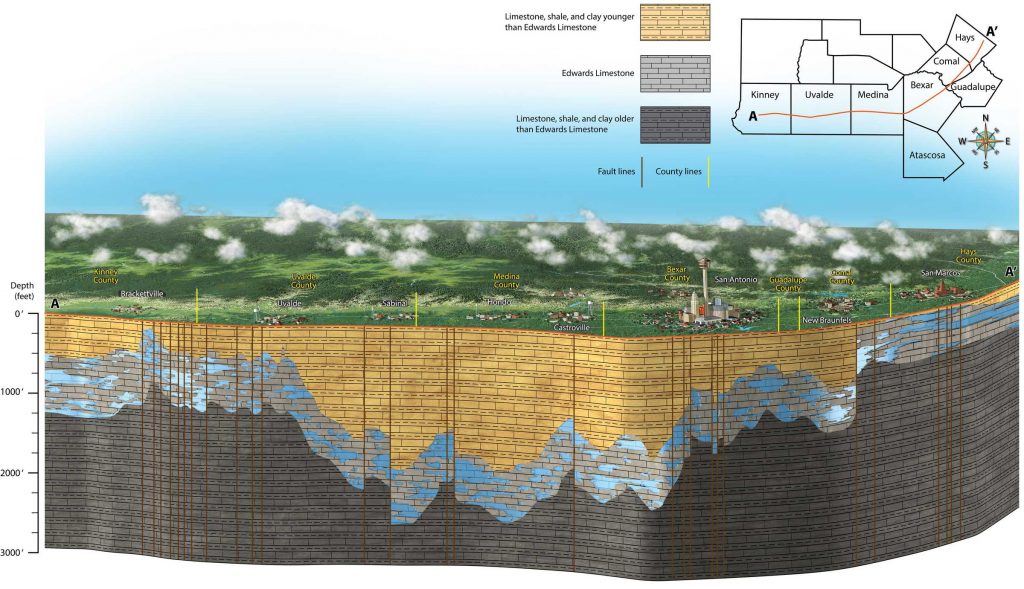
Below are a couple excerpts from The National Climate Assessment’s review of the Edwards Aquifer. This review was written to help inform decision-makers, utility and natural resource managers, public health officials, emergency planners, and other stakeholders by providing a thorough examination of the effects of climate change on the United States.
As a shallow karst aquifer, the Edwards is especially sensitive to climate change. Its shallow depth and karst features allow for rapid infiltration and recharge during wet periods, and discharge is similarly responsive, making the Edwards vulnerable to climate extremes of droughts and floods. This high susceptibility and exposure to climate change is a major challenge for managing the Edwards Aquifer as a resource. The probable impacts of climate change for the Edwards Aquifer include a decrease of water supply during droughts, a degradation of habitat for species of concern, economic effects, and the interconnectivity of these impacts. These climate change impacts will be exacerbated in central Texas’s rapidly urbanizing regions, as increasing impervious cover will affect water quality and rates of runoff and recharge.
Dramatic drawdowns of groundwater levels by human activity combined with climate change in many regions illustrate the challenges of the nonrenewable nature of groundwater and the multiple dependencies of some ecosystems and agricultural systems on groundwater. Multiple, integrated solutions will be needed to address the impacts on the Edwards Aquifer. These will necessarily involve ways to increase supply through technological approaches, such as desalination of brackish groundwater and aquifer storage and recovery; ways to decrease demand, such as conservation and regulation; and ways to reduce the impact of urbanization through sustainable design.
For example, The Edwards Aquifer Recovery Implementation Program Habitat Conservation Plan balances water pumping and use of the aquifer with protection of eight federally listed threatened and endangered species that depend on San Marcos Springs and Comal Springs, two of the largest springs in the southwestern United States. The plan incorporates a number of innovative water supply strategies including Aquifer Storage and Recovery and advanced water conservation, along with market-based solutions for voluntary suspension of groundwater pumping rights during drought periods.